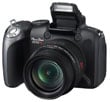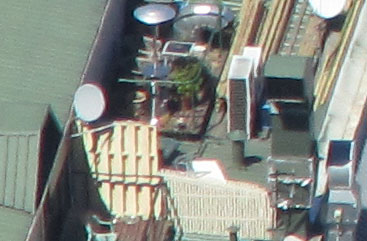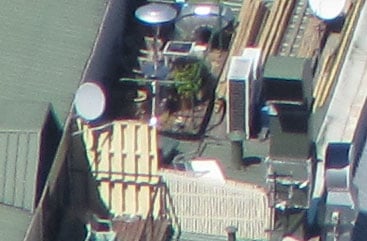Canon PowerShot SX1 IS
-
-
Written by Gordon Laing
Canon PowerShot SX1 IS vs SX10 IS vs EOS 450D / XSi
Canon PowerShot SX1 IS vs SX10 IS
outdoor scene telephoto
First things first: the composition above was taken from the same location as our first shot at the top of the page, albeit with the cameras tilted down a little. So take another look at our first shot and start at the bottom of the image in the middle and work your way up until you reach the corner of the inlet – that’s what you’re looking at here in close-up. It really demonstrates the massive optical zoom range you have at your disposal, but the big question of course is whether the quality is compromised. Below we’ve compared crops taken from images with both PowerShots fully zoomed-into their maximum focal lengths of 560mm. Interestingly despite both cameras delivering a very similar result when zoomed-out above, there’s greater differences visible here. The crops from the SX10 IS image are a little sharper and better-defined with crisper details. The lack of crispness on our SX1 IS images when zoomed-in becomes slightly worse towards the edges which suggests an optical issue with our particular sample – should we get a chance to evaluate another sample of the SX1 IS, we’ll report back in the future. If you own an SX1 IS, please let us know how yours performs in the SX1 IS thread in the Cameralabs forums. But to be fair even though the results below from our SX1 IS aren’t as crisp as those from our SX10 IS sample, they’re still as good or better than many super-zooms we’ve tested in the past. Now time for some controlled studio tests on our Canon PowerShot SX1 IS Studio Resolution page.
|
In March 2009, Canon released version 2.0.0.0 of its PowerShot SX1 IS firmware, which equips the camera with RAW recording capabilities. Models produced after this date (along with all those purchased in North America) should come with the firmware pre-installed, but existing owners can download the update here. To test these new capabilities, we updated an older SX1 IS with the new firmware, then reshot our main outdoor composition with its RAW plus Large JPEG mode; this would allow us to directly compare images created from exactly the same data. Note this shot was taken several months after those above, so the lighting and some of the details in the town, such as foliage, has naturally changed. Below are crops taken from the in-camera JPEG file alongside the RAW version, processed in Canon’s supplied Digital Photo Professional (DPP) 3.6 software using the default sharpness of 7. At first glance, both crops look fairly similar, although upon closer inspection the RAW version exhibits more visible graininess. Interestingly this appears to be due to variations in sharpening rather than noise reduction. We tried adjusting the noise reduction on the RAW file, but the graininess remained. Reducing the sharpness though delivered a result closer to the JPEG, and conversely, applying greater sharpening to the JPEG gave it a similar appearance to the RAW file. We were also unable to retrieve any highlight detail that had already become saturated. This is a disappointment for anyone hoping to enjoy greater real-life or tonal detail from the RAW file, although of course you may have better success with other images. This doesn’t however mean RAW capabilities are redundant on the SX1 IS though: like all RAW files, adjusting White Balance and Noise Reduction becomes very simple, although sadly DPP doesn’t offer any optical corrections to the SX1 IS’s files, so you’ll need to look elsewhere to reduce the fringing. To see a technical difference comparing the SX1 IS’s JPEG and RAW files, see our PowerShot SX1 IS Studio resolution page. |
Canon PowerShot SX1 IS: JPEG |
Canon PowerShot SX1 IS: RAW | |
 |  | |
f4, 80 ISO |
f4, 80 ISO |
Canon PowerShot SX1 IS results continued…
 |
Real-life resolution
 |
To compare real-life performance we shot the same scene with the Canon PowerShot SX1 IS, PowerShot SX10 IS and EOS 450D / XSi within a few moments of each other using their best quality JPEG and lowest ISO settings. The lenses on each camera were adjusted to deliver the same vertical field of view. The image left was taken with the Canon PowerShot SX1 IS at 6mm f4 and with a sensitivity of 80 ISO; the original Super-fine JPEG measured 5.33MB. The crops are taken from the upper left, center, lower right and lower left portions of the originals and presented here at 100%. |
Note the Canon 450D / XSi captures wider 3:2 aspect ratio images, so by matching the vertical field of view, we’re effectively treating the DSLR here as a 10.8 Megapixel camera, delivering 4:3 shaped images.
The PowerShot SX1 IS and SX10 IS share the same optics, the same DIGIC 4 image processor and identical 10 Megapixel resolutions, but their sensors employ different technologies. The SX10 IS uses a CCD sensor, which is traditional for most non-DSLRs, while the SX1 IS becomes Canon’s first compact with a CMOS sensor. Let’s see what impact that has on image quality.
Interestingly despite the photos below being taken moments apart under identical lighting conditions, the two PowerShots metered slightly differently in their Program modes: the SX1 IS metered an exposure of 1/500 at f4, while the SX10 IS metered 1/640 at f4. We took an additional image with +0.3EV compensation applied to the SX10 IS to match the exposure of the SX1 IS, but when measuring brightness values in Photoshop afterwards we found the original exposures to be the closest match. Consequently, the SX1 IS’s CMOS sensor appears to be approximately one third of an EV less sensitive than the SX10 IS when both are set to 80 ISO in this particular situation.
At first glance, the first two rows of crops below from the SX1 IS and SX10 IS respectively look very similar. Both show essentially the same amount of detail and share a similar style and appearance in terms of image processing. Look closely with a decent monitor though and you’ll see the SX1 IS crops appear a little less contrasty when compared side-by-side with those from the SX10 IS. This may at first be attributed to the slightly quicker shutter speed of the SX10 IS in this particular shot (see paragraph above), but we also noticed it on other samples.
Following our SX10 IS review, it’s no surprise to find some coloured fringing in high contrast areas like the mountain ridge in the first row of crops. Most super-zooms suffer in the same way, but models like the Panasonic FZ28 (and FZ18 before it) digitally reduce the effect on in-camera JPEGs. It’s a shame Canon hasn’t implemented similar corrections on its DIGIC 4 processor, but third party software can effectively reduce the effect later – see our SX10 IS and SX1 IS threads in the Canon section of the Cameralabs forum.
So despite suffering from visible fringing in high contrast areas, both the SX1 IS and SX10 IS give a good result here at their lowest sensitivities. They also perform well against the 450D / XSi when equipped with its kit lens. Like most DSLRs, the 450D / XSi’s default output is softer than a consumer model like the SX1 IS and can certainly be sharpened-up if preferred, but no processing can improve the softness seen in the lower right corner of images taken with our EF-S 18-55mm IS sample (as seen in the third row of crops).
Of course this test was with both super-zooms set to close to their widest focal lengths. Scroll to the bottom of this page to see a second set of examples taken with both cameras fully zoomed-into their maximum focal lengths to see how they compare at their extremes. Alternatively if you want to skip straight to detail results taken in a more controlled environment, head on to our Canon PowerShot SX1 IS Studio Resolution page.
NEW: See how the PowerShot SX1 IS’s RAW mode compares at the bottom of this page.
Canon PowerShot SX1 IS |
Canon PowerShot SX10 IS |
Canon EOS 450D / Rebel XSi | ||
 |
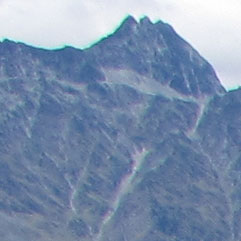 |
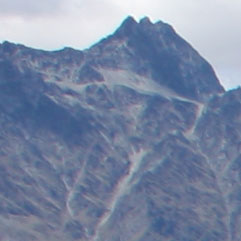 | ||
f4, 80 ISO |
f4, 80 ISO |
f8, 100 ISO | ||
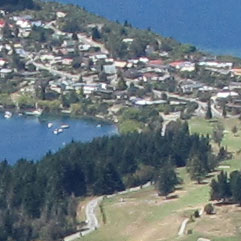 |
 |
 | ||
f4, 80 ISO |
f4, 80 ISO |
f8, 100 ISO | ||
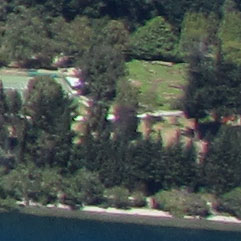 |
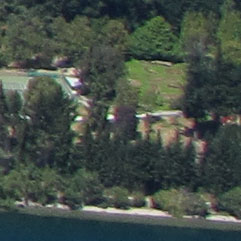 |
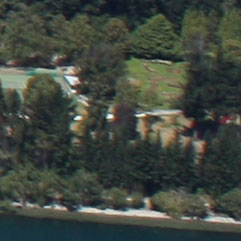 | ||
f4, 80 ISO |
f4, 80 ISO |
f8, 100 ISO | ||
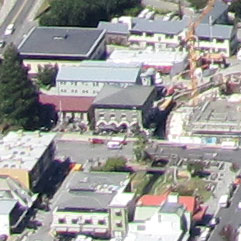 |
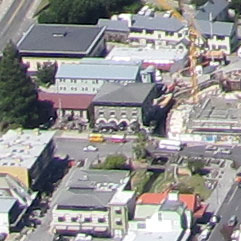 |
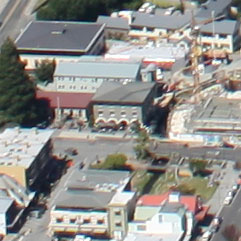 | ||
f4, 80 ISO |
f4, 80 ISO |
f8, 100 ISO |
